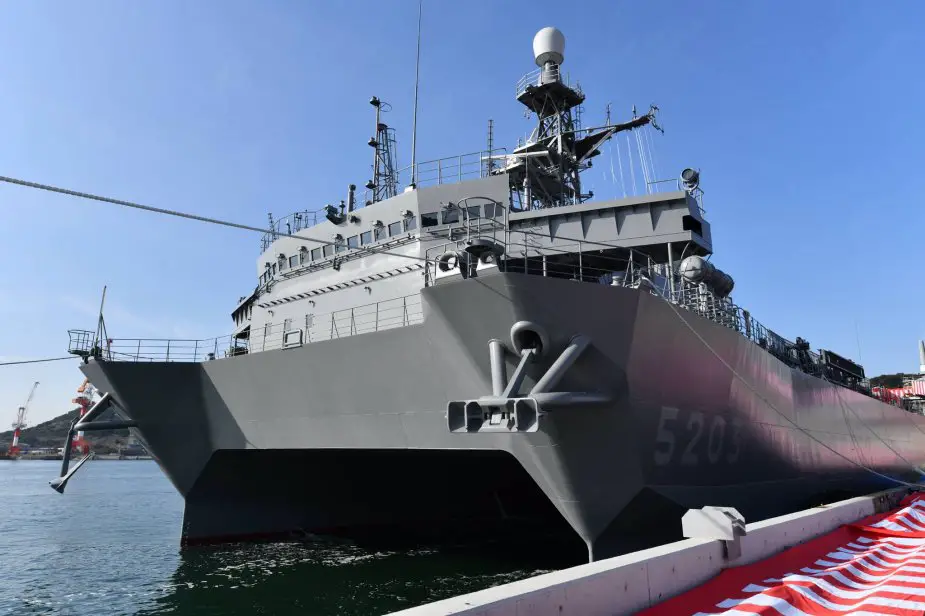Breaking news
First time in 30 years Japan commissions an ocean surveillance ship.
According to information published by The Asahi Shimbun on March 5, 2021, for the first time in nearly 30 years, Japan's Maritime Self-Defense Force has added a new ocean surveillance ship, which will monitor the seas for intrusions of Chinese submarines.
Follow Navy Recognition on Google News at this link
 Hibiki-class ocean surveillance ship JS Aki AOS-5203 (Picture source: Twitter account of JMOD)
Hibiki-class ocean surveillance ship JS Aki AOS-5203 (Picture source: Twitter account of JMOD)
The JMSDF commissioned the Aki, the third such vessel in its fleet, on March 4 and deployed it to its Kure base in Hiroshima Prefecture. A ceremony to mark the commissioning was held at a shipyard in Tamano, Okayama Prefecture, that day.
Japan aims to increase its vigilance as China continues its military expansion and its submarines pass close to Japanese territorial waters.
The Aki is a 67-meter-long catamaran with a standard displacement of 2,900 tons. Construction cost was 22.6 billion yen ($209 million).
Two other ships in its class, the Hibiki and the Harima, were deployed in 1991 and 1992, respectively. They were planned and designed with the former Soviet Union’s submarine fleet in mind during the Cold War.
Hibiki-class vessels have a beam of 30 metres (98 ft 5 in), a top speed of 11 knots (20 km/h; 13 mph), and a standard range of 3,800 nautical miles (7,000 km; 4,400 mi). Each vessel has a crew of 40, including five American civilian technicians, and a flight deck for helicopters to operate off of. They are able to deploy on station for 90 days.
The vessels have an AN/UQQ-2 Surveillance Towed Array Sensor System (SURTASS), which is installed in the United States. Data from the sensors is relayed through the Defense Satellite Communications System, and processed and shared with the United States. The data is fed into the Integrated Undersea Surveillance System.
Propulsion is provided by four Mitsubishi S6U-MPTK diesel electric engines.




























